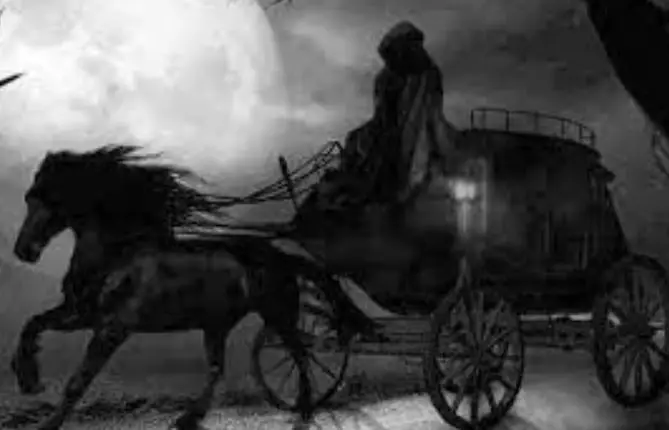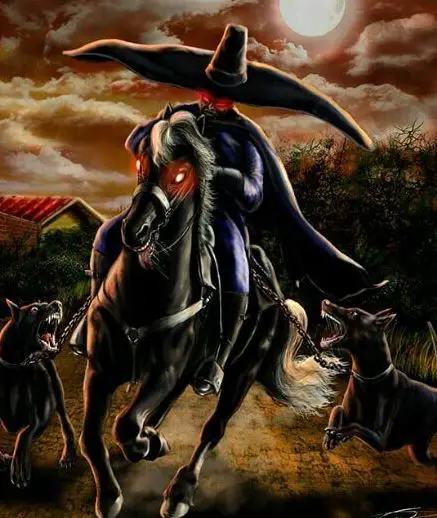Podcast: Play in new window | Download
Subscribe: Apple Podcasts | RSS
Chiapas is the southernmost state in the Mexican Republic. It is full of dense jungles, cloud forests, high mountains, ancient and colonial cities as well as more than its share of myths and legends. Here are 4.
- El Sumidero, Legend of Indigenous Resistence
It is said that the Chiapas people, who lived in the center of the state that would eventually be named for them, were particularly independent and aggressive. Their military might was such that  they were never fully conquered by the Aztecs who had made inroads into small parts of the northern and western fringes of their territory. The Chiapas people also fought bravely against the Spanish conquerors when they arrived in the first few decades of the 1500s. It is said that the Chiapas people became extinct, not because the conquerors had subjugated them, but because of their own decision to take their own lives rather than accept domination. To no avail, conquistador Luis Marín subdued the Chiapa town of Nandalumí, known to the Spanish as “Pueblo Grande,” in 1524. It would prove to be an uneasy occupation of the town. By 1528, sensing the Chiapas Indians were on the verge of revolt, the Spaniards, under the command of Diego de Mazariegos, had a plan to eradicate all those who would challenge the Spanish king’s authority. Very well-armed and with the support of the neighboring towns, Mazariegos reached the Peñón de Tepechtía, in the Sumidero Canyon, where, it is said that the last battle was fought against the brave natives. After a fierce exchange of gunfire, the Spanish soon prevailed. Seeing themselves surrounded by the enemy and facing the danger of being defeated, the besieged, instead of surrendering, threw themselves off the precipice from the rock that dominated the river with its almost vertical height. Entire families of Chiapa natives threw themselves off this high precipice, dying in this collective suicide. According to one colonial source, more than 15,000 people jumped to their deaths, which caused the waters of the river to turn red. The Spanish captain, seeing that all the Indians were jumping, ceased the combat. The survivors were organized into the first encomiendas in the area which were located on the banks of the river. Thus, new towns arose including Villarreal de los Indios, Chiapa de los Indios, Chiapa de Corzo and Chiapa de los Espanoles. Some of these settlements merged to become San Cristóbal de las Casas. The battle in the Sumidero was eternalized in the coat of arms that the Emperor Charles V granted in 1535 to the city of San Cristóbal de los Llanos de Chiapa. Historians are unable to verify that this event actually happened, so many regard it as just a legend. Fact or fiction, for the people of Chiapas, the story of El Sumidero is a symbol of the fight for their long-awaited freedom.
they were never fully conquered by the Aztecs who had made inroads into small parts of the northern and western fringes of their territory. The Chiapas people also fought bravely against the Spanish conquerors when they arrived in the first few decades of the 1500s. It is said that the Chiapas people became extinct, not because the conquerors had subjugated them, but because of their own decision to take their own lives rather than accept domination. To no avail, conquistador Luis Marín subdued the Chiapa town of Nandalumí, known to the Spanish as “Pueblo Grande,” in 1524. It would prove to be an uneasy occupation of the town. By 1528, sensing the Chiapas Indians were on the verge of revolt, the Spaniards, under the command of Diego de Mazariegos, had a plan to eradicate all those who would challenge the Spanish king’s authority. Very well-armed and with the support of the neighboring towns, Mazariegos reached the Peñón de Tepechtía, in the Sumidero Canyon, where, it is said that the last battle was fought against the brave natives. After a fierce exchange of gunfire, the Spanish soon prevailed. Seeing themselves surrounded by the enemy and facing the danger of being defeated, the besieged, instead of surrendering, threw themselves off the precipice from the rock that dominated the river with its almost vertical height. Entire families of Chiapa natives threw themselves off this high precipice, dying in this collective suicide. According to one colonial source, more than 15,000 people jumped to their deaths, which caused the waters of the river to turn red. The Spanish captain, seeing that all the Indians were jumping, ceased the combat. The survivors were organized into the first encomiendas in the area which were located on the banks of the river. Thus, new towns arose including Villarreal de los Indios, Chiapa de los Indios, Chiapa de Corzo and Chiapa de los Espanoles. Some of these settlements merged to become San Cristóbal de las Casas. The battle in the Sumidero was eternalized in the coat of arms that the Emperor Charles V granted in 1535 to the city of San Cristóbal de los Llanos de Chiapa. Historians are unable to verify that this event actually happened, so many regard it as just a legend. Fact or fiction, for the people of Chiapas, the story of El Sumidero is a symbol of the fight for their long-awaited freedom.
- The Eerie Cart of San Pascual
Through the cobbled streets of the city of Tuxtla Gutierrez, you can hear in the night echo the grinding of an old cart. Local residents know that this strange sound is coming from the cart of San P ascual which is sent to accompany those people who are dying and needing help to cross over to a place of eternal life. It is said that the eerie cart leaves from the church of San Pascualito, where the image of San Pascual is found, and advances through the dark streets, pushed by a skeletal monk. The cart then stops at the house where a dying person lies. As soon as the person dies, the cart disappears. The grinding sound made by the old cart tortures the relatives of any patient, who pray that the saint does not stop at their house. There are few people who dare to look out the window, but most people warn that the cart and the ghostly saint should not be seen. It is believed that if the skeletal monk looks at someone, his spirit will climb onto the cart, while his body remains motionless. Those who can’t stand the fear move away from the windows, turning off the few lights in their house, while the curious who look despite their fear do so praying that the spectral saint doesn’t notice. Everything worsens when the cart is accompanied by a bone-chilling wind, which invades the houses where it is heard passing. People do what they can to hide from San Pascual and his cart, but they eventually come for everyone.
ascual which is sent to accompany those people who are dying and needing help to cross over to a place of eternal life. It is said that the eerie cart leaves from the church of San Pascualito, where the image of San Pascual is found, and advances through the dark streets, pushed by a skeletal monk. The cart then stops at the house where a dying person lies. As soon as the person dies, the cart disappears. The grinding sound made by the old cart tortures the relatives of any patient, who pray that the saint does not stop at their house. There are few people who dare to look out the window, but most people warn that the cart and the ghostly saint should not be seen. It is believed that if the skeletal monk looks at someone, his spirit will climb onto the cart, while his body remains motionless. Those who can’t stand the fear move away from the windows, turning off the few lights in their house, while the curious who look despite their fear do so praying that the spectral saint doesn’t notice. Everything worsens when the cart is accompanied by a bone-chilling wind, which invades the houses where it is heard passing. People do what they can to hide from San Pascual and his cart, but they eventually come for everyone.
- El Sombrerón, the Evil Hat Man
Those few people who have seen El Sombrerón walking the streets of San Fernando, Chiapas, describe him as a very tall, stocky character wearing an elegant black suit with gold buttons and huge boots with silver spurs. His face is not clearly seen, because he wears a huge black hat that covers part of his face and back. When this big-hatted man appears, he offers riches and promises of a  long life to anyone who sees him. This is followed by a shock that paralyzes the victim, preventing him from moving or walking to save himself. El Sombrerón causes anguish, indescribable fear, and the inability of people to even speak or defend themselves. The victim also feels uncontrollable discharges of chills shooting throughout the body. It is said that El Sombrerón does this to steal the victim’s soul and to feed off the person’s energy. After he is done with his macabre harvest, he leaves the drained person abandoned in a place far from where they initially were captured. When this is all finished, El Sombrerón moves away from the site and mounted on an enormous jet-black horse, crosses the streets of San Fernando amid a pack of howling dogs. There have been locals who say that if you apply the secretions from the eyes of a dog into your own eyes that you can see El Sombrerón at will, along with a whole host of other ghostly entities. However, the risk of trying this is deadly, since whoever witnesses a vision this way can be trapped in another dimension or show signs of madness or may even end up with a fatal outcome. Children are especially at risk in times when El Sombrerón appears, because whoever is caught and has sold his soul to this evil entity can free himself from the curse with the innocent soul of a child as payment. Many people will kidnap an infant or a small child and offer it to El Sombrerón in order to save themselves.
long life to anyone who sees him. This is followed by a shock that paralyzes the victim, preventing him from moving or walking to save himself. El Sombrerón causes anguish, indescribable fear, and the inability of people to even speak or defend themselves. The victim also feels uncontrollable discharges of chills shooting throughout the body. It is said that El Sombrerón does this to steal the victim’s soul and to feed off the person’s energy. After he is done with his macabre harvest, he leaves the drained person abandoned in a place far from where they initially were captured. When this is all finished, El Sombrerón moves away from the site and mounted on an enormous jet-black horse, crosses the streets of San Fernando amid a pack of howling dogs. There have been locals who say that if you apply the secretions from the eyes of a dog into your own eyes that you can see El Sombrerón at will, along with a whole host of other ghostly entities. However, the risk of trying this is deadly, since whoever witnesses a vision this way can be trapped in another dimension or show signs of madness or may even end up with a fatal outcome. Children are especially at risk in times when El Sombrerón appears, because whoever is caught and has sold his soul to this evil entity can free himself from the curse with the innocent soul of a child as payment. Many people will kidnap an infant or a small child and offer it to El Sombrerón in order to save themselves.
- The Tisigua, Demonic Temptress
The name “Tisigua” comes from an older dialect of the Zoque language and means, “Woman of fire.” The “fire” in this case comes from eroticism or excessive sensuality. To the Zoque, this supernatural entity is considered a yoki woman, or foreigner, and is sometimes nicknamed in modern times, “Mala Mujer,” or “Bad Woman.” La Tisigua is known in other regions of Chiapas as Tishanila. She is found on the roads or in the river pools, with her long hair displayed to provoke men who have not behaved well socially and have strayed away from their families. It is said that this entity was created by the elders in a time before the Spanish arrived, so that the youngsters would not go around carousing and neglecting their responsibilities. Many centuries ago, the  Tisigua would appear on the banks of what is now known as the Sabinal River near the modern city of Tuxtla Gutiérrez, Chiapas. In those days the river had beautiful crystalline waters and young people stayed for long hours bathing in the beautiful pools that formed next to the thick trunks of the ahuehuete trees. Sometimes spending any amount of time in the waters would have an intoxicating effect and bathers would then see Tisigua, a beautiful woman who caused them the evil known as Kojamtokoyo which loosely translates to “losing one’s senses or ability to reason.” A typical incident of an encounter with Tisigua would go like this: Any Zoque man, when passing by a pool, whose pure and clear waters were refreshed by the shade of some ahuehuete tree, feels a strange compulsion to rest and bathe in the waters. While swimming he hears the clapping of hands behind him but quickly turns toward the shore only to see that the grasses are moving as if someone who was spying on him was hiding. Then, while still in the water he hears the clapping again, this time accompanied by a whistle as an invitation, and almost immediately a beautiful woman with long hair, captivating eyes and a sharp nose, emerges from the waters in front of him, dressed in a transparent chiffon tunic showing off a beautiful body. Overwhelmed by this divine image, the man feels immediately drawn to this mystery woman and begins to swim vigorously towards her without being able to reach her. By the time he makes it to the shore, the beautiful woman is already out of the water and behind a thick ahuehuete tree. He tries to follow her, but this intriguing woman, moving like a snake, slips through the undergrowth despite the thorns and branches that abound beyond the shore, without hurting herself. On the other hand, the poor man keeps falling and getting up between the thorn bush and the thickets with the added danger of stepping on a snake. His gaze is riveted on that beautiful face that smiled at him, on those eyes that winked at him. He eventually catches up with the Tisigua and she allows him to hug and kiss her. After a while, the evil woman returns to get into her pool with the man following her. Partially in the water, the Tisigua starts to spin around and soon the spinning becomes so fast that it hypnotizes her victim. All the while, the evil enchantress is laughing at the man and claps her hands on her thighs, celebrating her triumph. He, wanting to defend himself from her, yells to claim her, but he can’t articulate the words to speak to her clearly. While he stammers, stupefied, idiotic, staring into space, she, the wicked woman, the maddening one, disappears into the trees. From the moment of their first encounter men lose their reason forever, they start to walk with their eyes lost and their mouths open, staggering aimlessly. No healer can save them, and the church cannot help, even if they ask for forgiveness. The forever-altered man ends up asking for food from house to house, wanting to see in each person who helps him, that beautiful face that smiled at him and those eyes that winked at him, hoping to find the magical causes of his madness.
Tisigua would appear on the banks of what is now known as the Sabinal River near the modern city of Tuxtla Gutiérrez, Chiapas. In those days the river had beautiful crystalline waters and young people stayed for long hours bathing in the beautiful pools that formed next to the thick trunks of the ahuehuete trees. Sometimes spending any amount of time in the waters would have an intoxicating effect and bathers would then see Tisigua, a beautiful woman who caused them the evil known as Kojamtokoyo which loosely translates to “losing one’s senses or ability to reason.” A typical incident of an encounter with Tisigua would go like this: Any Zoque man, when passing by a pool, whose pure and clear waters were refreshed by the shade of some ahuehuete tree, feels a strange compulsion to rest and bathe in the waters. While swimming he hears the clapping of hands behind him but quickly turns toward the shore only to see that the grasses are moving as if someone who was spying on him was hiding. Then, while still in the water he hears the clapping again, this time accompanied by a whistle as an invitation, and almost immediately a beautiful woman with long hair, captivating eyes and a sharp nose, emerges from the waters in front of him, dressed in a transparent chiffon tunic showing off a beautiful body. Overwhelmed by this divine image, the man feels immediately drawn to this mystery woman and begins to swim vigorously towards her without being able to reach her. By the time he makes it to the shore, the beautiful woman is already out of the water and behind a thick ahuehuete tree. He tries to follow her, but this intriguing woman, moving like a snake, slips through the undergrowth despite the thorns and branches that abound beyond the shore, without hurting herself. On the other hand, the poor man keeps falling and getting up between the thorn bush and the thickets with the added danger of stepping on a snake. His gaze is riveted on that beautiful face that smiled at him, on those eyes that winked at him. He eventually catches up with the Tisigua and she allows him to hug and kiss her. After a while, the evil woman returns to get into her pool with the man following her. Partially in the water, the Tisigua starts to spin around and soon the spinning becomes so fast that it hypnotizes her victim. All the while, the evil enchantress is laughing at the man and claps her hands on her thighs, celebrating her triumph. He, wanting to defend himself from her, yells to claim her, but he can’t articulate the words to speak to her clearly. While he stammers, stupefied, idiotic, staring into space, she, the wicked woman, the maddening one, disappears into the trees. From the moment of their first encounter men lose their reason forever, they start to walk with their eyes lost and their mouths open, staggering aimlessly. No healer can save them, and the church cannot help, even if they ask for forgiveness. The forever-altered man ends up asking for food from house to house, wanting to see in each person who helps him, that beautiful face that smiled at him and those eyes that winked at him, hoping to find the magical causes of his madness.
REFERENCES
Para Todo Mexico web site (in Spanish)
